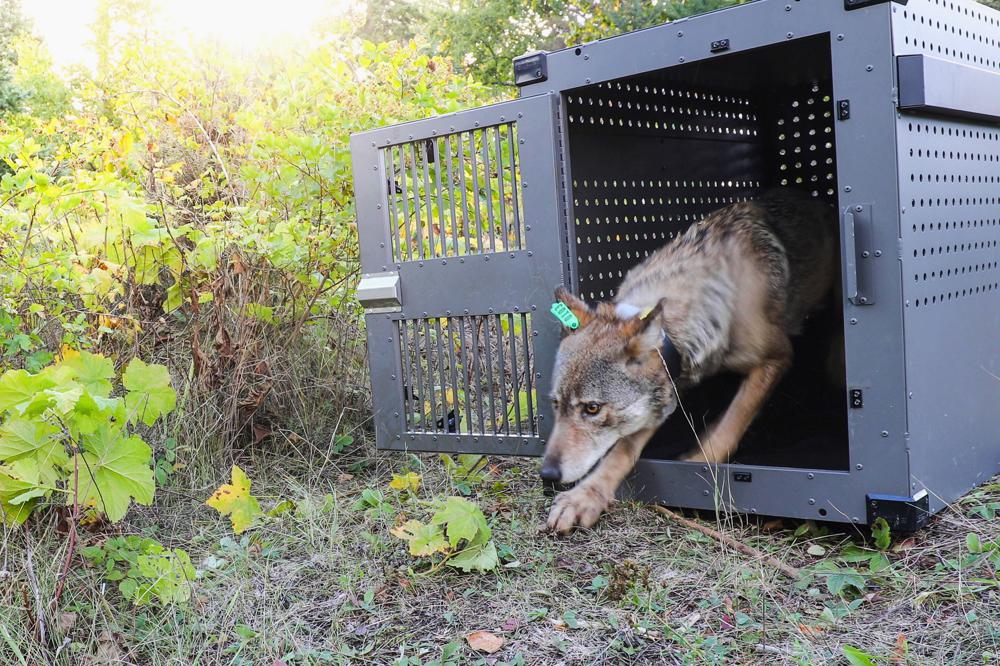National
Isle Royale wolf population surges after nearly dying off

TRAVERSE CITY, Mich. (AP) — Isle Royale National Park’s gray wolf population has reached 28, a dramatic comeback after the species nearly disappeared from the Lake Superior island chain, researchers said this past week.
Health problems from inbreeding caused a die-off that left only two wolves a few years ago, leading park officials to authorize an airlift of mainland replacements. Wolves play a crucial role in balancing the island ecosystem by preying on moose, which browse heavily on balsam fir and other plants.
“Mission accomplished. The goals have been met,” said John Vucetich, a Michigan Technological University biologist who has long studied the relationship between the island’s wolves and moose.
Nineteen wolves were brought to the park in 2018 and 2019 from Minnesota, Ontario and Michigan’s Upper Peninsula. Some died and one found its way back to the mainland. But at least five litters of pups have been born to those that settled into their new surroundings.
This year’s population is the highest since 2006, when it totaled 30, said Sarah Hoy, a research assistant professor and animal ecologist at Michigan Tech.
A team of scientists surveyed the wolves and moose from the air last winter, resuming one of the world’s longest running field studies of a predator and prey. It was canceled in 2021 to protect the research team from exposure to COVID-19.
“The wolves were doing everything we’d expect them to be doing,” Hoy said. “We found them killing moose, exhibiting courtship and mating behavior, defending their territories. It was great to see.”
They appear to have divided into two packs, one occupying the main island’s western section and the other the eastern side.
The moose population was estimated at 1,346 — a decline of 28% from the previous total of 1,876 in 2020, according to a report Hoy, Vucetich and biologist Rolf Peterson prepared from the excursion.
Moose numbers boomed during the wolf drop-off but have plunged since. Predation accounted for nearly 9% of deaths over the past year. Other factors were blood-sucking tick infestations and malnutrition caused by a shortage of balsam fir, the moose’s primary winter food source.
Because their long-term average population is around 1,000, the recent slump won’t be cause for concern unless it continues at a similar rate for several more years, Hoy said.
Scientists believe the island’s first moose swam to Isle Royale, which is part of Michigan but closer to Minnesota, around the turn of the 20th century. Wolves arrived in the late 1940s, apparently crossing ice bridges from Minnesota or Ontario.
Moose provide an ample food supply for the wolves, which in turn help keep moose numbers in check.
Researchers believe other wolves have migrated to the park at times, helping refresh the gene pool. But as climate change heats Lake Superior’s surface, ice bridges are forming less often.
That could create an occasional future need for more mainland wolves to prevent more drop-offs from inbreeding, Vucetich said, although the population is in good shape for now.
Another question is whether park vegetation will recover to previous levels as moose numbers fall, he said.
“Ïf it doesn’t, it means we won’t be able to have as many moose and in the long term that would be trouble for wolves,” Vucetich said.

